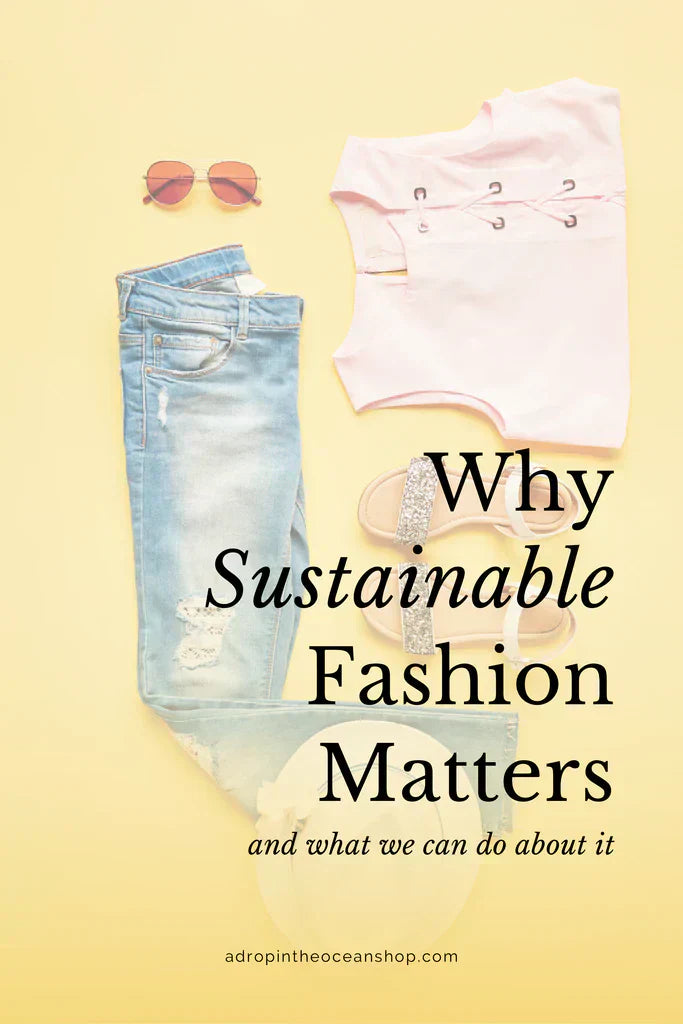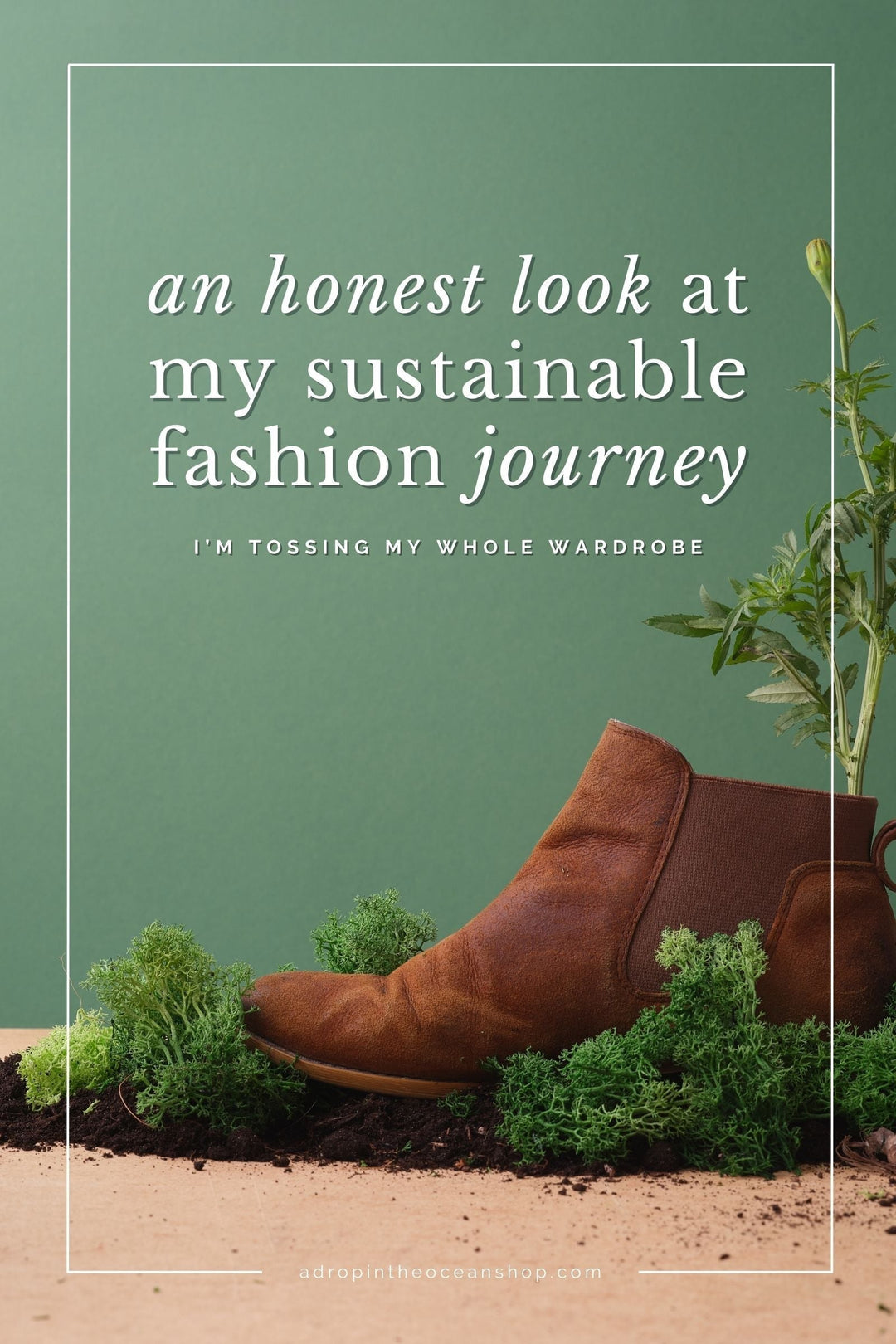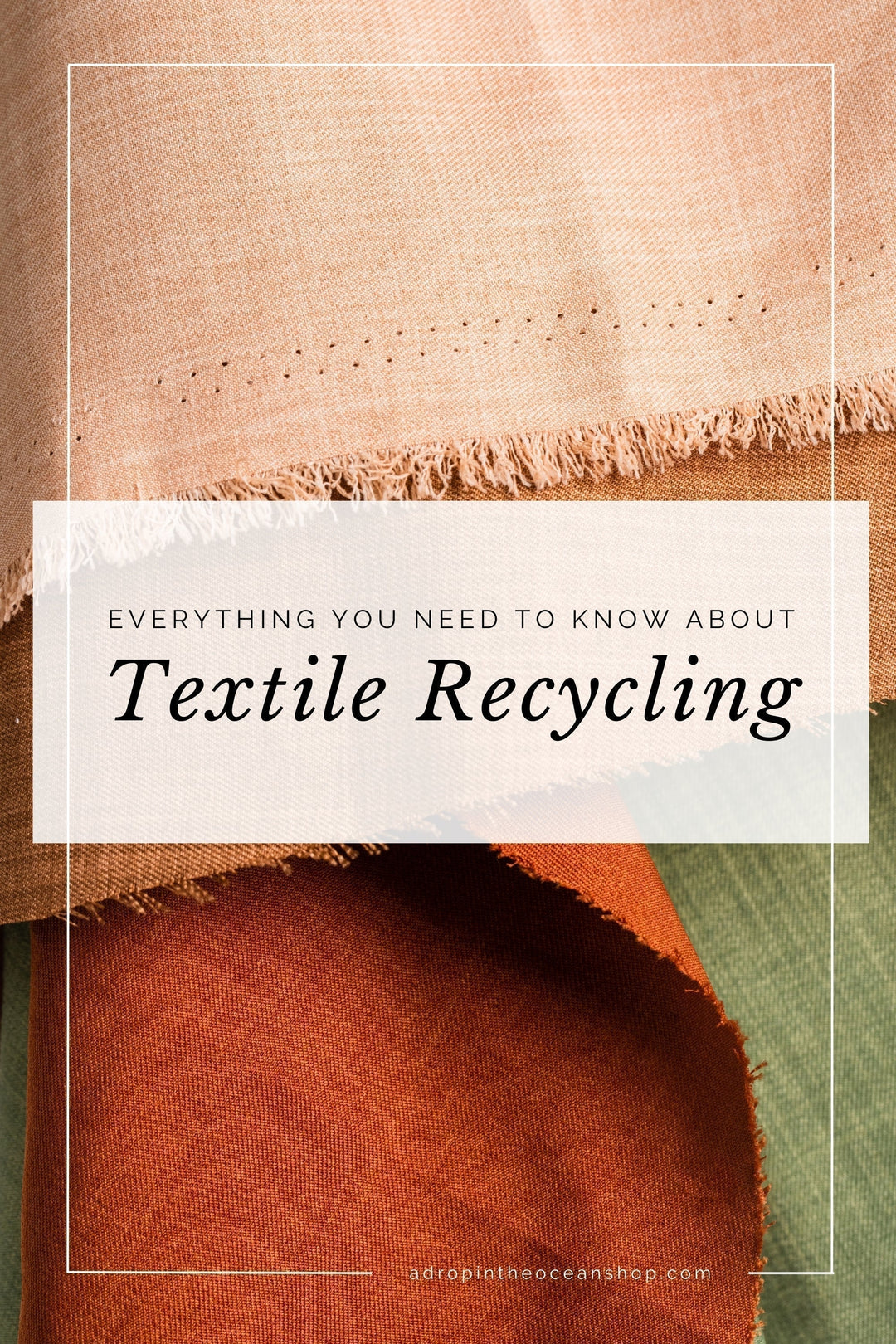Why Sustainable Fashion Matters + What We Can Do About It

This post first appeared in our weekly Make Waves Mondays email series on September 7, 2020, and was updated and re-shared again on September 8, 2025.
Hello hello friend!
Today I wanna continue on our sustainable fashion journey with a little rewind back to the basics.
So far we’ve talked about my current sustainable fashion journey (and how I’m revamping my entire wardrobe), textile recycling (the good, the bad, and the everything in between), and one of my favorite zero waste swaps, wool dryer balls.
So today, let’s talk about why sustainable fashion is important, and why fast fashion is a problem. (And what exactly fast fashion even is!)
Because unless you’re living naked off the grid, we all gotta wear clothes.
And every article of clothing we buy has an impact.
How can we keep that impact as small as possible?
So let’s dive in 👇
What is ‘fast fashion’?
First things first, what exactly is ‘fast fashion’?
You’ve probably heard the term before, but maybe you’re not quite familiar with what it actually means.
💡 Fast fashion refers to clothing that is made quickly and inexpensively to keep up with (*ahem* artificially created demand for…) rapidly-changing trends.
Fast fashion is a design, manufacturing, and marketing method focused on rapidly producing high volumes of clothing. Fast fashion garment production leverages trend replication and low-quality materials (like synthetic fabrics) in order to bring inexpensive styles to the end consumer.
- The Good Trade
Fast fashion inherently relies on overconsumption, and rapid consumption.
It depends on us wanting more and more clothes — and at cheaper and cheaper prices.
And all of this clothing consumption adds up. This year, fast fashion in the US was valued at nearly $46 billion — up from barely more than $41 billion just two years ago.
Truthfully, once upon a time I used to be allllll about cheap clothes. You could catch me at the clearance rack piling up $5 t-shirts and $10 jeans nearly any day of the week, with essentially zero regard for whether I actually needed a new pair of jeans, or even whether I really loved that t-shirt and would wear it more than twice.
But now I absolutely cringe at the thought.
Side note: Fast fashion is a symptom of larger systemic issues that cannot be solved overnight. My intention in sharing this information is not to shame or pretend that everyone can afford new, slow fashion pieces (or that you should be purchasing new, slow fashion clothing at all). My intention is to share knowledge, raise awareness of global environmental and human rights issues, and work towards a more sustainable future for all living things. As always, do what you can, when you can, where you can.
Think about it this way:
If a shirt is being sold for $5, realistically, how ethical and sustainable could the conditions in which that shirt was made be?
I used to imagine that our clothes were made by big industrial machines.
But they’re not.
Our clothes are made by real life, living, breathing, human beings.
And those fellow humans are working in conditions that no one should ever be working in…
Crumbling buildings.
Toxic fumes.
Poor wages.
Child labor.
…just to name a few.
And on top of all of this, we used to have four seasons — spring, summer, fall, and winter. (And even before then, in the late 1800s, we only had two seasons — fall/winter and spring/summer.)
Now, fast fashion has intentionally designed 52 micro-seasons.
This means that every week, fast fashion brands like Zara, H&M, and Shein are saying, “Hey remember that t-shirt you bought last week that was so ~in~? It’s so yesterday. Buy this ~new~ t-shirt so you can be cool again.”

So what happens to all of the clothes of yester-week?
According to The Ellen MacArthur Foundation, clothing sales have more than doubled in the last 25 years, but in that same time, the number of times an item is worn has decreased by about 36%.
More than half of all fast fashion items produced are thrown away less than one year later.
Because our clothing is so cheap, we treat it as such.
And it’s not just us doing the throwing away.
Fast fashion retailers will literally set their unsold clothes on fire so they don’t “ruin their image” with discounts to move inventory.
These companies would rather destroy their own clothes than sell them.
All of this means that people across the globe (or, more specifically, across the global south) are making our clothes in deplorable conditions, for basically no pay, at increasing rates, and then whatever of their work isn’t sold is incinerated.
Friend...can you IMAGINE working 17-hour shifts for just $20 (yes — $20 for a full 17-hour shift), being docked $14 if any of the clothes you made in the 17-hour shift had mistakes, and then finding out that the clothes you made ended up just being tossed in an incinerator two weeks later…??
I’m ready to riot just writing that.
How in the heck did we get here?
“In the 1950s, if a woman wanted to purchase a ready-made dress, she could spend about $9 (or $72 in today’s dollars) to order an item from a Sears catalog. Today, a shopper could walk into Forever 21 and buy a simple dress for about $12.” - Terry Nguyen, Vox
I don’t need to tell you that the cost of living in the last several decades has increased dramatically.
Adjusting for inflation, since the 1960s…
-
Home prices have risen 159%
-
Public higher education costs have risen 105%
-
Rent has risen 80%
-
Healthcare costs have risen 611%
…yet clothing prices have plummeted.
And clothing consumption has skyrocketed.
We can no longer afford basic necessities like housing and education on a minimum wage job, but we can afford a closet stuffed to the brim with clothes.
And that makes us feel good.
So we keep buying.
And fast fashion keeps delivering.

Image from The True Cost documentary
So what can we do?
The #1 thing we can do is to simply buy less. Buy something because you need it, you love it, and you can see yourself wearing it over and over and over and over again.
Don’t buy something just because it’s cheap.
When you do need new clothes, opt for secondhand first whenever possible.
Like I mentioned a couple of weeks ago, most of my wardrobe these days is secondhand, and I love the wardrobe I’m building right now more than ever.
Here are some of my favorite ways to get started with secondhand clothing:
-
Swap with friends! I always love when friends text me, “Hey I’ve got a bag of clothes I don’t wear anymore, wanna take a look?” Some of my favorite go-tos are from texts like these!
-
Attend or host a clothing swap. This is basically the same thing as swapping with friends, but a bit more organized. At a swap a few years ago, for just $20 I walked away with two of my favorite tops, a pair of jeans, a pair of shorts, some killer heels, and two dresses!
-
If you’re local to the Tacoma or Seattle area, check out The Chayah Movement. I’ve participated in some of their events in the past, and the founder Zakiya is one of the kindest people I’ve ever met, and is so absolutely passionate about sustainable fashion it’s impossible not to get excited about it around her as well.
-
Support a local consignment or resale shop. There are SO many great things about supporting local consignment shops…
-
By shopping local, an average of 68% of your dollar stays in your local economy. (This is probably a lot more at a place like a consignment shop!)
-
You’re supporting a person — your neighbor, not a corporation. And I guarantee that real person is going to do a very real happy dance celebrating your purchase the second you walk out the door.
-
The person who actually brought the clothes to the shop will get a portion of the sale, too.
-
Check out an online consignment shop. My personal fave is ThredUP. Some of my favorite pieces in my closet right now came from ThredUp. They’ve got great prices and, again, you’re helping real people clean out their closets and make a little money on the side.
Now, I totally understand that sometimes you need to purchase new clothes, you can’t find what you’re looking for secondhand, and you can’t afford the prices of sustainable fashion brands.
In that case, make what you purchase last as long as possible (more on that next week!). I like to call this “slow fast fashion.” It’s not the best solution, but it’s better than falling into the trap of manufactured fashion cycles.
Buy less.
Buy what you love.
Buy what you’ll look forward to wearing again and again.
And take care of your clothes so they last you for years to come.
Now do me a favor, friend, and comment below and tell me all about your FAVORITE sustainable clothing item in your closet. Was it secondhand? An investment piece you wear all.the.time? I wanna know it all! Comment below and tell me about it!
Related:
Did France Just Ban Fast Fashion?
What happens to all of the stuff we return?









Great post—explains the harmful impacts of fast fashion on workers and the planet, highlighting issues like poor wages, unsafe working conditions, and environmental degradation. Encourages mindful consumption and supports sustainable alternatives.
Powerful read — the impact of fast fashion is shocking and your suggestions to buy less & choose secondhand are so practical. Thanks for raising awareness!
thanks for info.
Really loved reading this blog! The way it emphasizes the importance of sustainable fashion is truly inspiring! It’s a reminder that even a small, conscious choices can contribute to a healthier planet.
Fantastic read! The insights on fast fashion’s impact and how we can make better choices are eye-opening. Thank you for promoting sustainability and making a difference.
Leave a comment